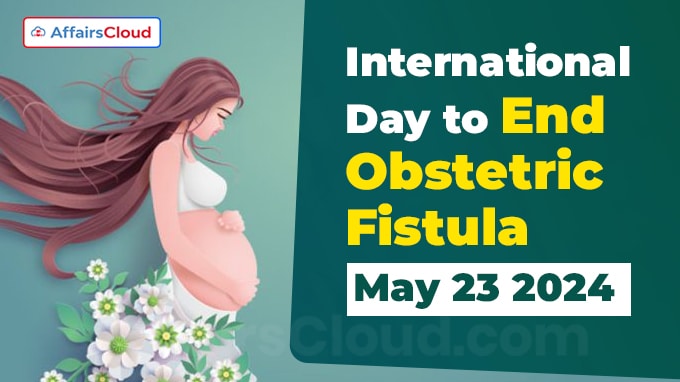 The United Nations (UN)’s International Day to End Obstetric Fistula is annually observed across the globe on 23rd May to raise awareness about obstetric fistula, one of the most serious and tragic childbirth injuries that can affect both the mother and the child.
The United Nations (UN)’s International Day to End Obstetric Fistula is annually observed across the globe on 23rd May to raise awareness about obstetric fistula, one of the most serious and tragic childbirth injuries that can affect both the mother and the child.
- The Day also aims to promote action towards preventing, treating, and eliminating obstetric fistula and generate much-needed additional support for women affected.
Theme:
The 2024 theme of International Day to End Obstetric Fistula is “Breaking the Cycle: Preventing Fistula Worldwide”.
The 2024 theme emphasised equitable access to quality maternal health services, social reintegration for affected women, and sustained investment in healthcare systems.
Background:
i.On 20th December 2012, the United Nations General Assembly (UNGA) adopted a resolution A/RES/67/147, designating 23 May as the International Day to End Fistula.
- The resolution also called on the international community to utilise the Day to significantly raise awareness and intensify actions toward ending obstetric fistula.
ii.The first-ever International Day to End Fistula was marked on 23 May 2013.
Note: The resolution cited Interlinkages between poverty, malnutrition, lack of/inadequate/inaccessible healthcare services, early childbearing, child marriage, violence against young women and girls, and gender discrimination as the root causes of obstetric fistula.
Understanding Obstetric Fistula:
Definition: An abnormal connection between the rectum and the vagina.
Cause: Prolonged, obstructed labour without timely, high-quality medical care.
Consequences: Leaking urine, feces, or both; Chronic medical issues; Depression and social isolation; and Increased poverty.
Impact on Maternal Health:
i.90% of pregnancies with fistula result in stillbirth.
ii.Despite global progress in maternal health, obstetric fistula remains prevalent in lower- and middle-income countries (LMICs).
Prevention and Treatment:
i.Obstetric fistula is preventable and can largely be avoided by delaying the age of the first pregnancy;
ii.Other essential measures include accessible midwifery and obstetric care, and affordable and accessible treatment of fistula.
Campaign to End Fistula:
i.In 2003, the United Nations Population Fund (UNFPA) and its partners launched a global Campaign to End Fistula.
- It aligns with the international targets to improve maternal and newborn health.
ii.The goal is to make obstetric fistula as rare in developing countries as in developed nations.
International Commitment:
i.In 2018, the UNGA adopted a resolution to end obstetric fistula by 2030.
ii.Achieving this goal requires strong political leadership, strategic interventions, increased resources, etc.
UNFPA’s Impact on Fistula Repair:
i.Over the past 2 decades, UNFPA has facilitated 140,000 fistula repair surgeries.
ii.Between 2018 and 2023, more than 12,000 women and girls received social reintegration support.
Key Facts:
i.Each year, up to 100,000 new cases of obstetric fistula occur globally.
ii.Over 2 million girls and women live with untreated fistulas.
iii.Obstetric fistula caused by obstructed labour accounts for up to 6% of all maternal deaths globally.
About United Nations Population Fund (UNFPA):
i.It is the UN sexual and reproductive health agency which began operations in 1969 as the United Nations Fund for Population Activities (UNFPA).
ii.It was later renamed in 1987 as United Nations Population Fund while retaining the UNFPA abbreviation.
Executive Director– Dr. Natalia Kanem
Headquarters– New York, United States of America (USA)




